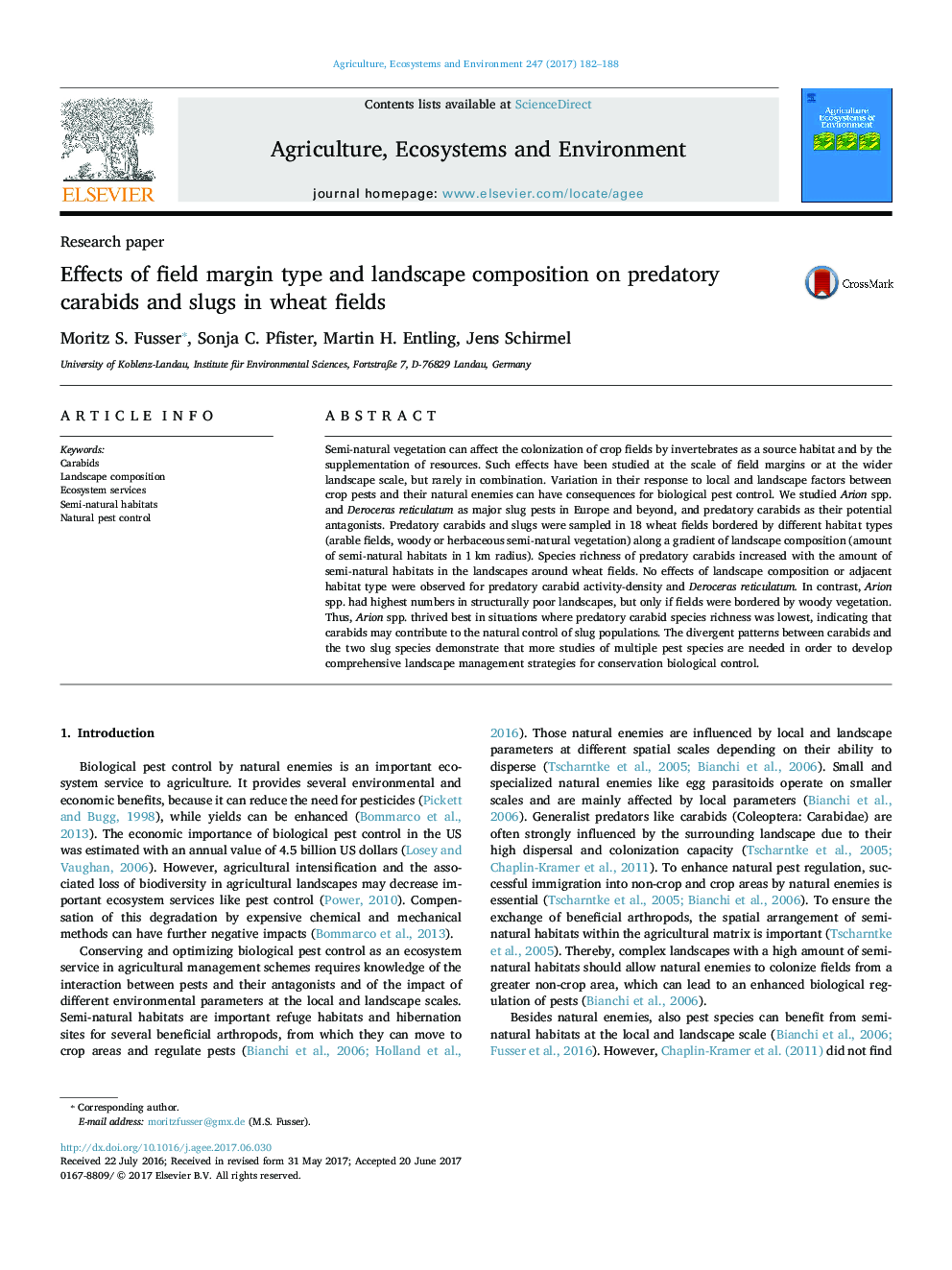| Article ID | Journal | Published Year | Pages | File Type |
|---|---|---|---|---|
| 5537991 | Agriculture, Ecosystems & Environment | 2017 | 7 Pages |
Abstract
Semi-natural vegetation can affect the colonization of crop fields by invertebrates as a source habitat and by the supplementation of resources. Such effects have been studied at the scale of field margins or at the wider landscape scale, but rarely in combination. Variation in their response to local and landscape factors between crop pests and their natural enemies can have consequences for biological pest control. We studied Arion spp. and Deroceras reticulatum as major slug pests in Europe and beyond, and predatory carabids as their potential antagonists. Predatory carabids and slugs were sampled in 18 wheat fields bordered by different habitat types (arable fields, woody or herbaceous semi-natural vegetation) along a gradient of landscape composition (amount of semi-natural habitats in 1Â km radius). Species richness of predatory carabids increased with the amount of semi-natural habitats in the landscapes around wheat fields. No effects of landscape composition or adjacent habitat type were observed for predatory carabid activity-density and Deroceras reticulatum. In contrast, Arion spp. had highest numbers in structurally poor landscapes, but only if fields were bordered by woody vegetation. Thus, Arion spp. thrived best in situations where predatory carabid species richness was lowest, indicating that carabids may contribute to the natural control of slug populations. The divergent patterns between carabids and the two slug species demonstrate that more studies of multiple pest species are needed in order to develop comprehensive landscape management strategies for conservation biological control.
Related Topics
Life Sciences
Agricultural and Biological Sciences
Agronomy and Crop Science
Authors
Moritz S. Fusser, Sonja C. Pfister, Martin H. Entling, Jens Schirmel,
